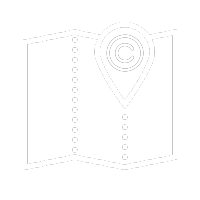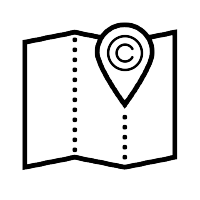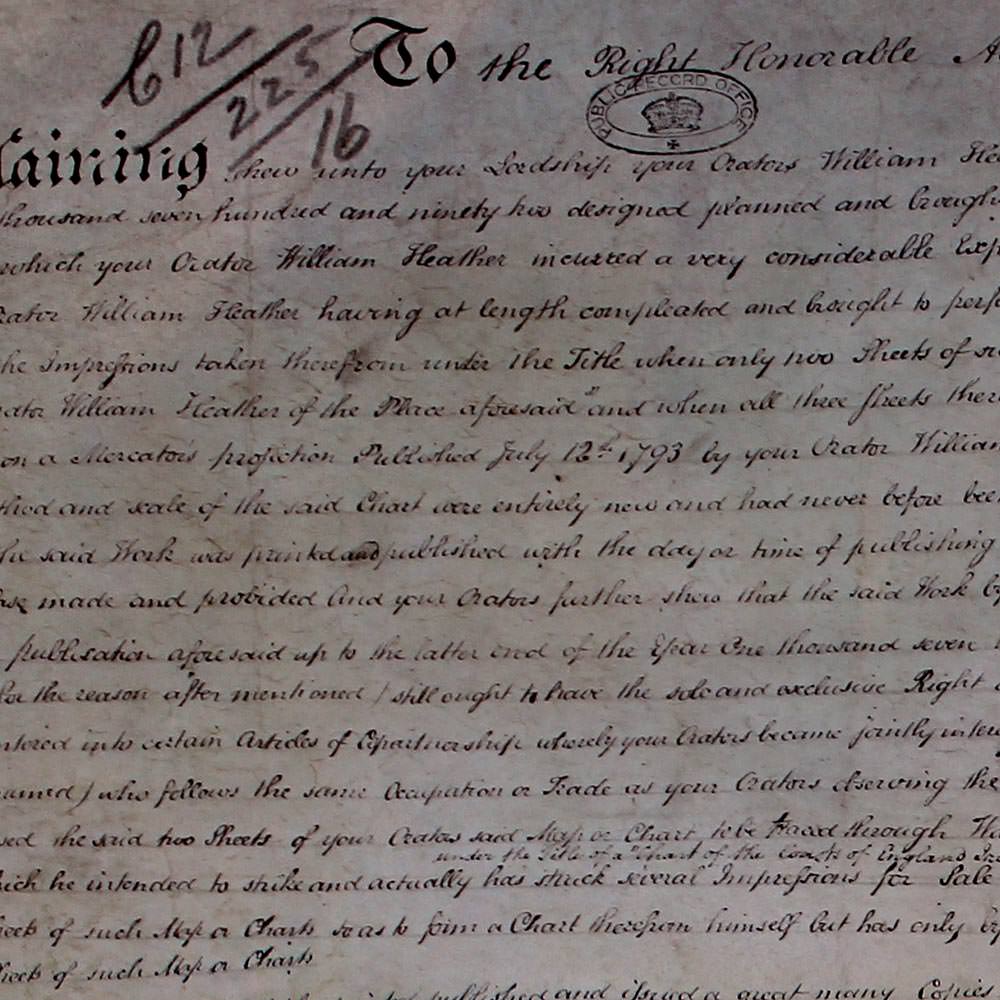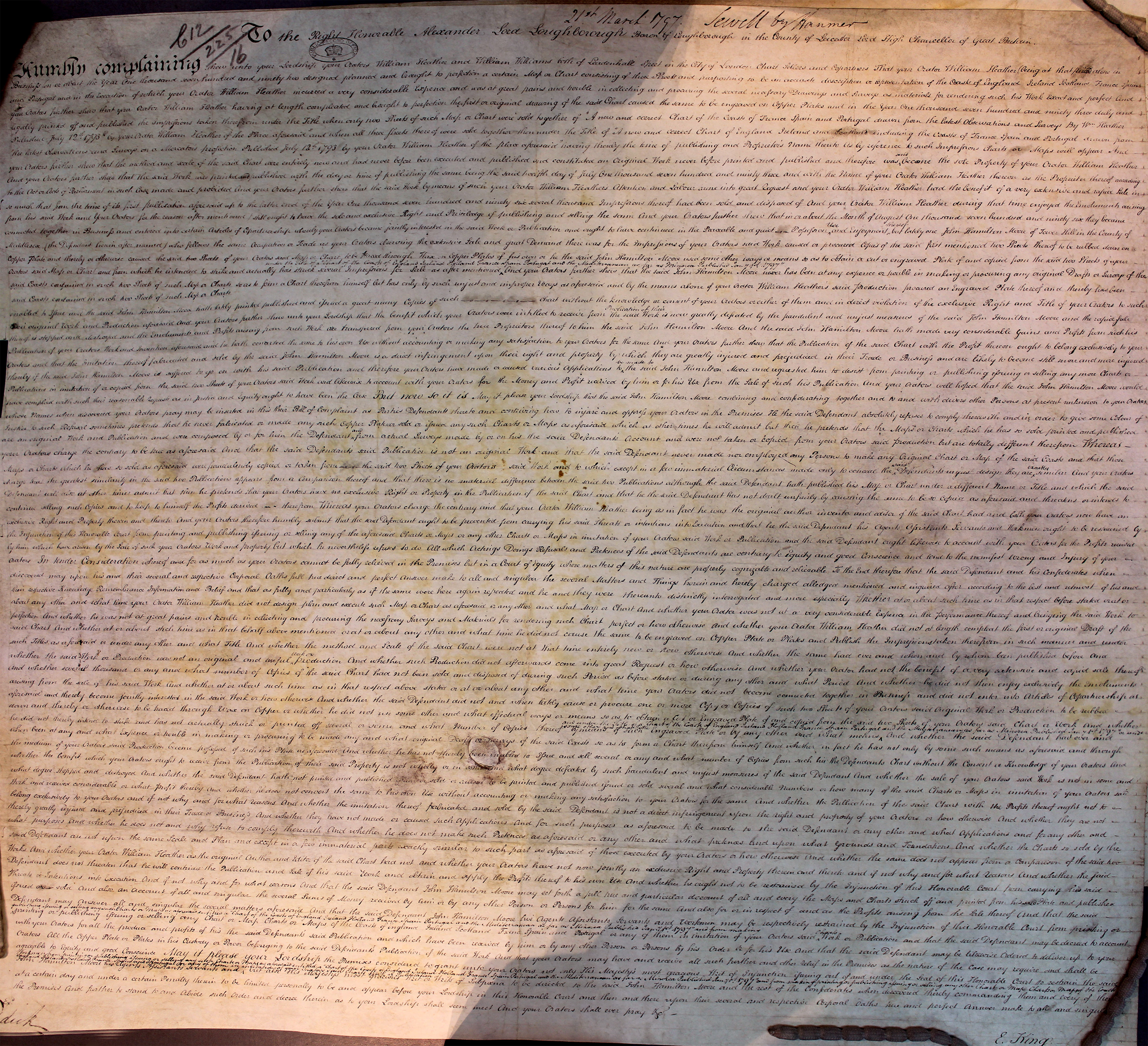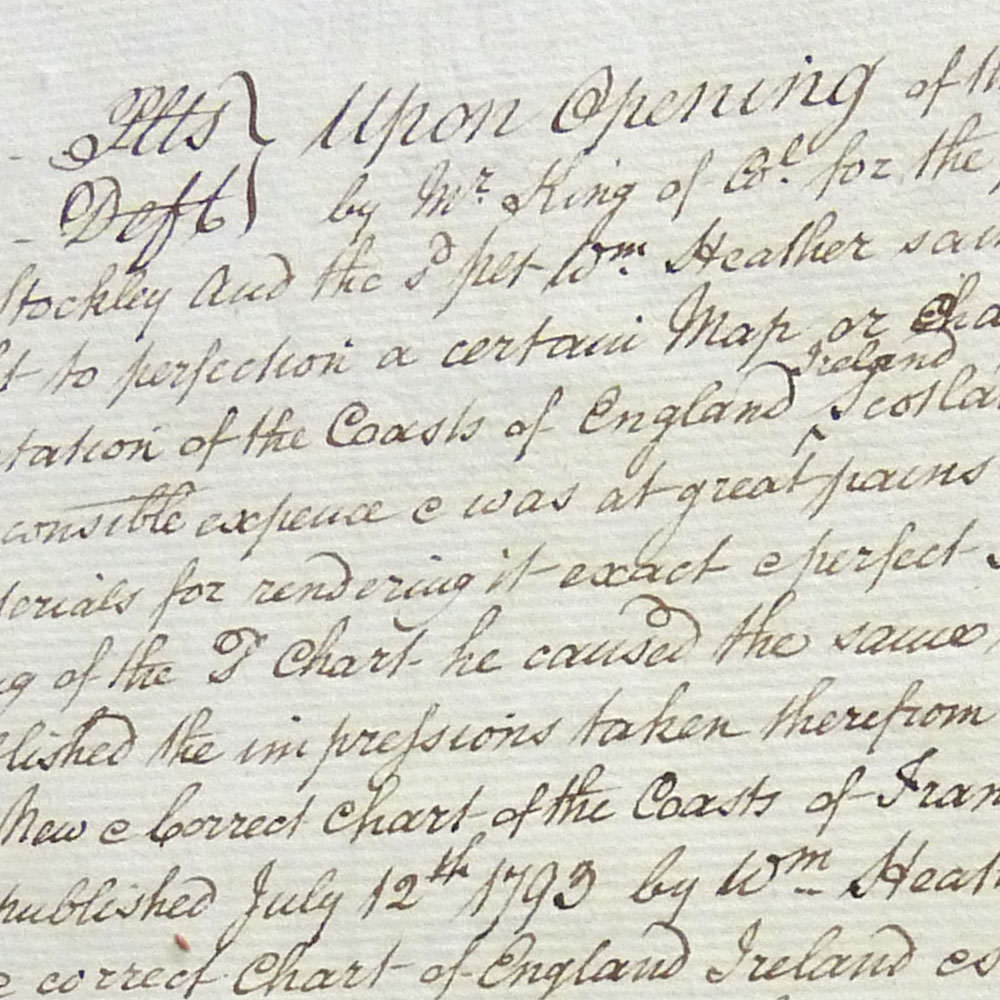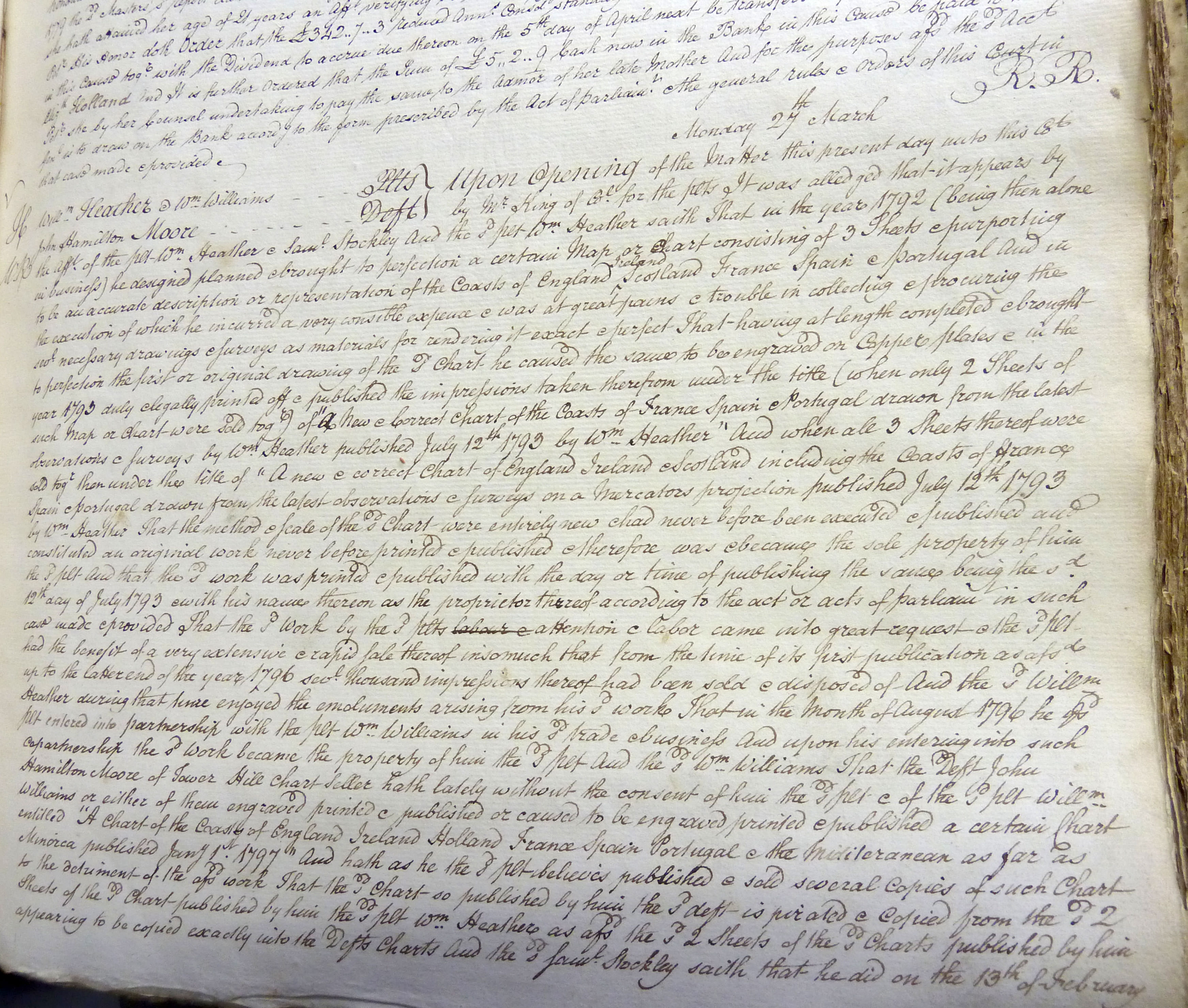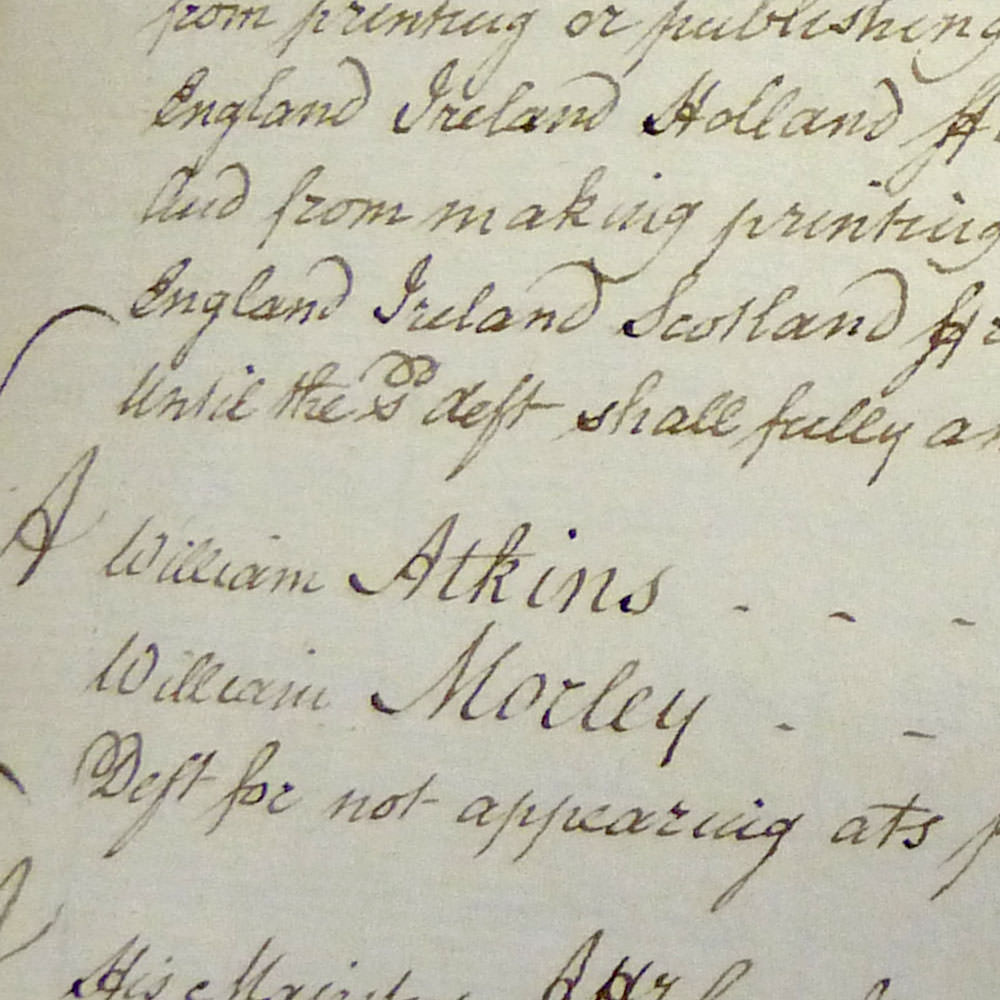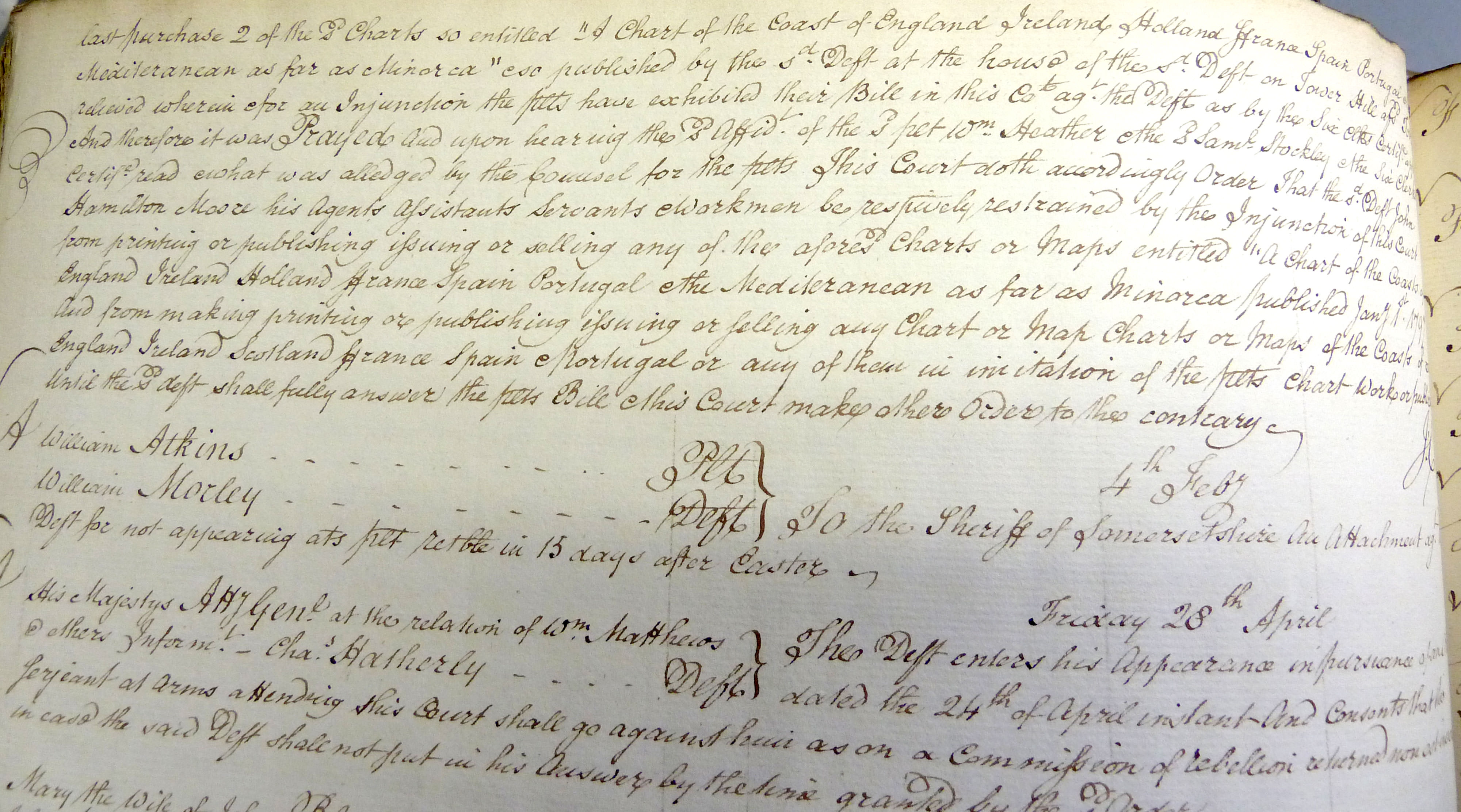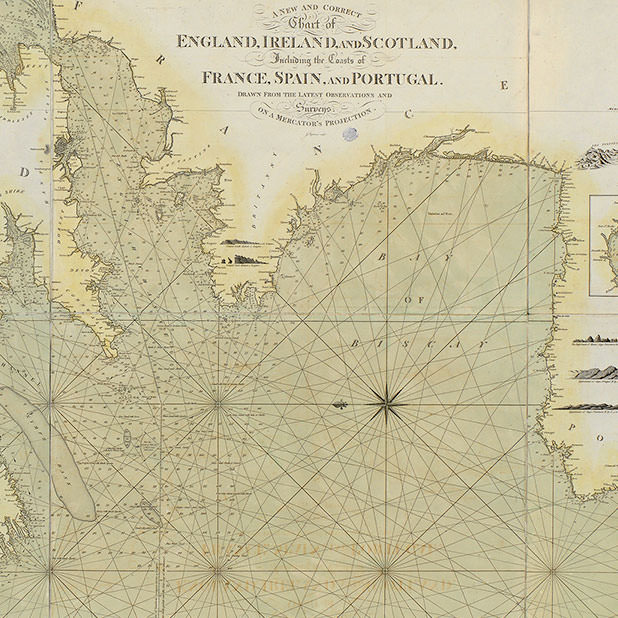John Hamilton Moore was defendant in two further cases of copyright infringement. In 1789 another rival publisher, David Steel, brought an action in the King’s Bench arguing that Moore had published a chart of ‘the East Coast of England, including the navigation from the South Foreland to Flamborough Head from the latest observations and surveys’ that was an unlawful copy of two charts Steel had published in 1782. As in the previous action brought against Moore by Robert Sayer in 1785, Moore provided expert witnesses who testified that there were a number of errors in Steel’s charts and that Moore’s was a superior map that differed significantly from Steel’s. The jury would have found for Moore, clearing him of any wrong-doing, however Steel’s lawyer agreed to withdraw the action. Steel was left to pay Moore’s costs.
In the third copyright infringement action against John Hamilton Moore, a former assistant of Moore’s, William Heather, claimed that Moore had pirated a chart called ‘A New and Correct Chart of the Coasts of France Spain & Portugal drawn from the latest observations & surveys by William Heather’. The copyright suit followed what seems to be a falling out between Moore and Heather, as after Heather had left Moore to start his own business, Moore commenced proceedings against him alleging that Heather owed him a sum of money.
Heather’s action was commenced in the Court of Chancery in 1797 before being transferred to the King’s Bench, where it was heard in March 1798 before Lord Kenyon. As in the Sayre v Moore litigation, there was a special jury made up of merchants with expertise in navigational charts and maps. In the previous cases against him, Moore was able to produce expert witnesses that could testify to the differences and significant improvements in his map copies. This was largely the reason that he managed to persuade the jury of his innocence in actions brought against him by Sayer and Steel. This time however, Heather (perhaps having learnt more than just the publishing trade from his former employer) produced the expert witnesses, including Captain Stephenson, who had previously appeared as a witness for Moore in the earlier cases (NB Heather subsequently published Captain Stephenson’s book, The New British Channel Pilot, in 1799).
Heather argued that Moore had unlawfully copied one of his charts. Moore responded by arguing that it Heather’s map was the unlawful copy, pirated from an earlier publication released by Moore. Like Moore’s witnesses in the previous two cases, Heather’s witnesses persuaded the jury that Moore’s map contained a series of crucial errors and omissions, and that Heather’s map was far more superior and of greater utility to the navigational industry. As such, Lord Kenyon found that Moore had pirated Heather’s chart.
